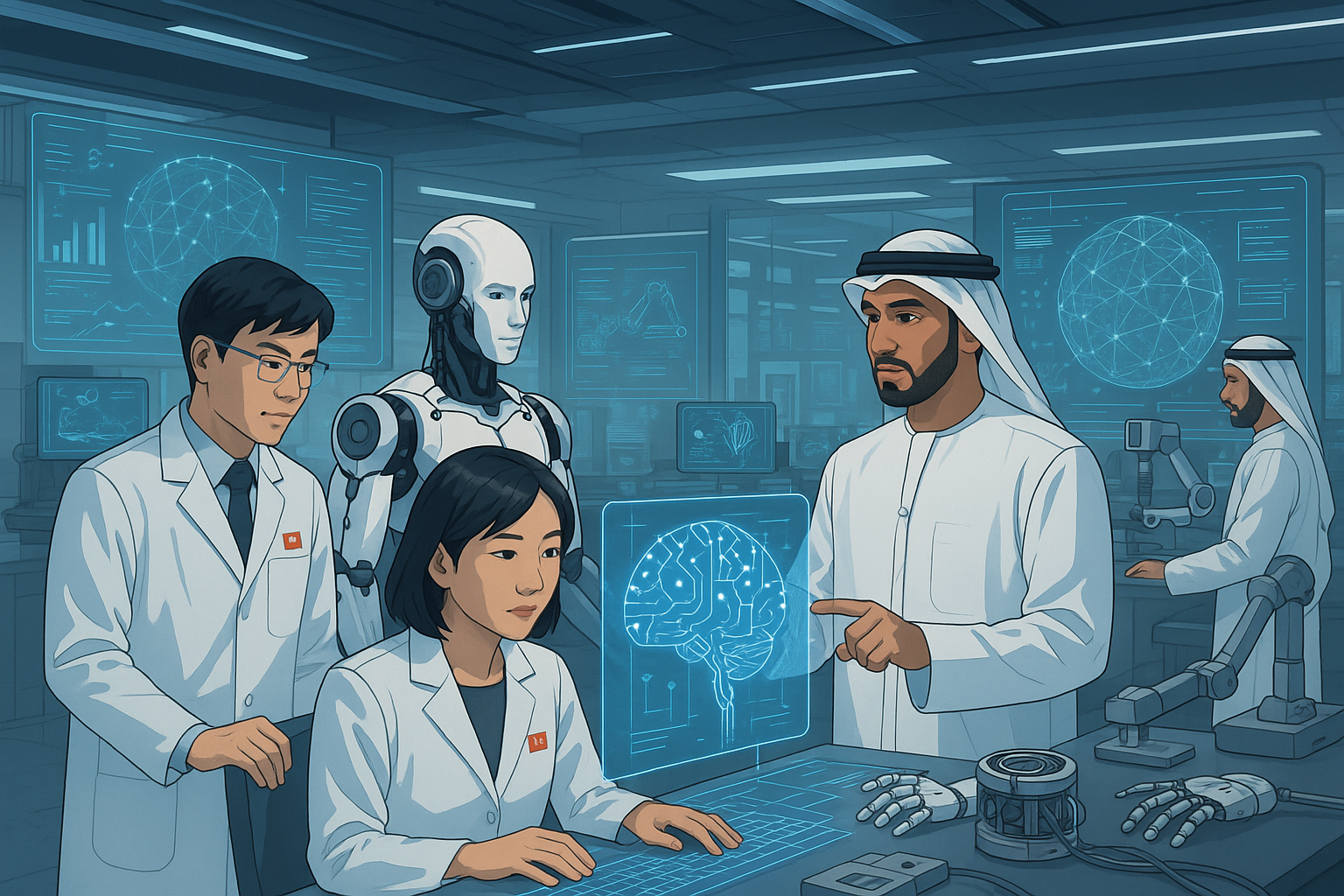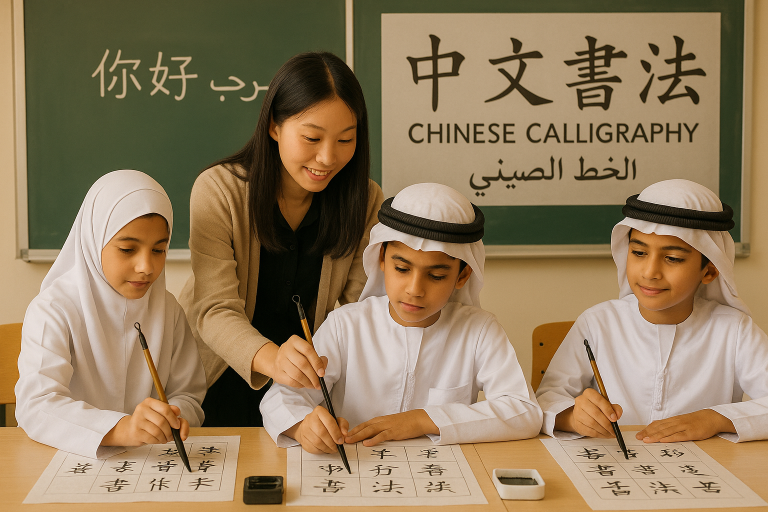Technology Transfer and Innovation: Building the Digital Future Together
Introduction
In an era defined by the relentless pace of the Fourth Industrial Revolution, the partnership between the People’s Republic of China and the United Arab Emirates has evolved into a powerful engine for technological advancement. Their collaboration in technology is no longer a simple matter of procurement but a sophisticated synergy of strategic technology transfer, ambitious joint research and development, and a shared, unwavering vision for a digital future. From the seamless connectivity of nationwide 5G networks, built in partnership with Chinese tech leaders, to pioneering joint research in artificial intelligence, the China-UAE tech alliance is creating a new paradigm for global innovation. This partnership is a testament to how two nations can align their national strategies to not only accelerate their own digital transformation but also to co-create the technologies that will shape the 21st century. This article delves into the core of this dynamic collaboration, exploring the shared vision that drives it, the deep cooperation in foundational technologies like 5G and AI, the focus on cultivating a vibrant and sustainable tech ecosystem, and the boundless future of their joint technological journey.
A Shared Vision for a Digital Future
The remarkable synergy in the tech sector is rooted in a powerful alignment of national strategies. The UAE’s forward-looking vision, encapsulated in ambitious plans like the “UAE Centennial 2071” and the “National Strategy for Artificial Intelligence,” aims to transform the nation into a diversified, knowledge-based economy powered by cutting-edge technology. This perfectly complements China’s own innovation-driven development strategy, which seeks to establish the nation as a global leader in science and technology. This shared ambition has created a fertile ground for collaboration, moving the relationship beyond that of a buyer and seller to one of genuine strategic partners.
This partnership is a core component of the “Digital Silk Road,” the technological dimension of the broader Belt and Road Initiative. The Digital Silk Road aims to build a global network of digital infrastructure, foster e-commerce, and promote the development of smart cities. The UAE, with its advanced infrastructure, strategic location, and enthusiastic adoption of new technologies, has positioned itself as a key hub and a model partner for this initiative. Together, China and the UAE are demonstrating a shared commitment to not just participating in the digital economy, but actively shaping its future trajectory.
Core Technology Cooperation: 5G, AI, and Smart Cities
The practical results of this tech alliance are most evident in three core areas that are foundational to the digital future: 5G, AI, and smart cities.
Case Study 1: The Nationwide 5G Rollout
The deployment of 5G networks across the UAE stands as a landmark achievement of the partnership. In collaboration with Chinese technology giant Huawei, the UAE’s telecom operators have rolled out one of the world’s most advanced and comprehensive 5G infrastructures. This has provided the nation with the high-speed, low-latency connectivity essential for the next wave of innovation, from the Internet of Things (IoT) and autonomous vehicles to augmented reality and remote surgery. This collaboration was not just about supplying equipment; it involved deep technical cooperation in network planning, deployment, and optimization, showcasing a partnership that builds critical, next-generation infrastructure.
Case Study 2: The Rise of Artificial Intelligence
Artificial intelligence is at the heart of both nations’ future economic plans, and their collaboration in this field is deep and expanding. Chinese AI technology is being widely applied across the UAE in sectors ranging from finance and healthcare to logistics and public services. This includes everything from AI-powered diagnostic tools in hospitals to intelligent traffic management systems on city streets. The partnership extends to foundational research, with the establishment of joint AI laboratories and research centers, such as the collaboration between the UAE’s Mohamed bin Zayed University of Artificial Intelligence (MBZUAI) and Chinese institutions, aimed at pushing the boundaries of AI knowledge.
Case Study 3: Building the World’s Smartest Cities
The UAE’s ambition to create some of the world’s most advanced smart cities, particularly in Dubai and Abu Dhabi, has been significantly accelerated through its partnership with China. Chinese technology is a key component in the digital platforms that manage these urban environments. This includes advanced public safety and surveillance systems that enhance security, smart grid technology that improves energy efficiency, and intelligent transportation systems that reduce congestion. By integrating this technology, the UAE is creating urban spaces that are not only more efficient and sustainable but also offer a higher quality of life for their residents.
Joint R&D and Cultivating a Tech Ecosystem
A defining feature of the maturing tech partnership is the shift from simple technology acquisition to genuine co-development and joint innovation. Both countries recognize that long-term technological leadership requires a sustainable ecosystem that fosters homegrown innovation. This has led to the establishment of joint R&D centers and university partnerships focused on creating new intellectual property in areas of mutual interest.
This focus on building a local ecosystem is also being fueled by a growing flow of capital. Chinese venture capital firms, recognizing the potential of the UAE market, are increasingly funding promising local tech start-ups. This injection of “smart money” brings not only capital but also valuable expertise and access to the vast Chinese market. Reciprocally, Emirati investors are actively seeking opportunities in China’s dynamic tech scene. This two-way flow of investment is nurturing a more vibrant and resilient start-up culture in the UAE, creating the foundation for the next generation of tech unicorns.
The Future of Tech Collaboration: From AI to Space
Looking ahead, the China-UAE tech partnership is poised to expand into even more ambitious domains. Space technology is a particularly promising frontier. Building on existing cooperation in satellite launches and data sharing, the two nations are exploring possibilities for joint space missions, lunar research, and the development of space-related technologies. Biotechnology, advanced materials, and genomics are other next-generation fields where their complementary strengths can lead to significant breakthroughs.
As they deepen their collaboration, the UAE and China are also positioned to play a key role in shaping the rules and standards that will govern the use of emerging technologies globally. By working together in international forums like the International Telecommunication Union, they can advocate for a more inclusive and equitable system of global tech governance. The UAE China Chamber of Commerce (UECN) will be a crucial enabler in this future, connecting tech companies, facilitating complex technology transfer agreements, and helping businesses navigate the evolving intellectual property and regulatory landscapes in both nations.
Conclusion: A Blueprint for 21st Century Innovation
The technology partnership between China and the UAE is a powerful blueprint for international collaboration in the 21st century. It is a relationship built on a shared strategic vision, deep cooperation in the foundational technologies of our time, and a mutual commitment to building a sustainable and dynamic innovation ecosystem. This is a partnership of equals, where technology and knowledge flow in both directions, and where the co-creation of new solutions generates immense mutual benefit. By harnessing the power of the Fourth Industrial Revolution together, China and the UAE are not only driving their own economic diversification and prosperity but are also building a more innovative, connected, and digitally empowered future for all.







